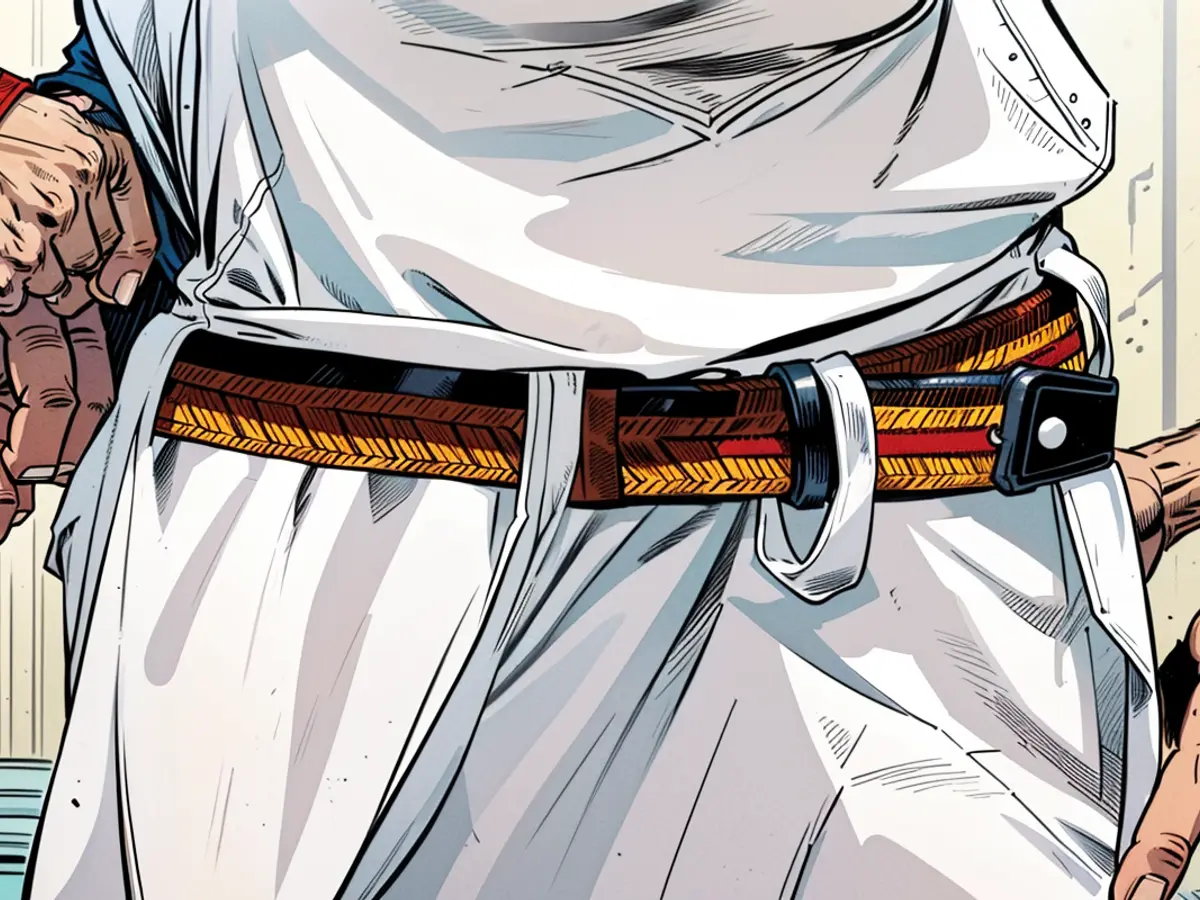German hues and tones - Unrestrained or not: featuring black, red, and gold of German origin.
Unrestrained, the most natural way to handle the German flag would be: battered, enlightened, possibly even carefree and rejoicing. This was how it looked in the summer fairy tale of 2006, when a vast ocean of black-red-gold overpowered the Brandenburg Gate and other pop-up viewing areas throughout the nation.
A mark of belonging
"Germans feel connected to their country and its national colors," beamed the then-serving President of Germany, Horst Köhler, during that year. "I'm delighted that I'm no longer the only person with a flag on my car." These days, you can find yourself immersed in black-red-gold car mirror covers or make-up sticks at supermarkets.
A flag and its colors represent a social identity, where people feel they share a link to a particular collective. This was certainly the case back in 2006. And then in the UEFA Championship year of 2024? Is the tactile attachment to a piece of material that holds so much tragic history, politics, prejudice, and national pride within it still so straightforward?
"The significant factor is whether people utilize the national colors inclusively or exclusively," shares Julia Becker from the University of Osnabrück. Becker is a Professor for Social Psychology, who researches racism, discrimination, and identity. "Inclusive signifies associating black-red-gold with diversity and multiplicity. This would be a rather casual approach."
However, the scholar considers an exclusive approach, the one that excludes, as problematic. "Let's say one relies on the concepts of the so-called leading German culture or disregards migrants and migrant women. Then one cannot consider this an unconstrained approach, as it is also evident racism could be stimulated."
A complex relationship
The connection to black-red-gold has never been simple. Reflecting back to 2013: Even the former Chancellor of Germany, Angela Merkel, had a tough time with the German flag when her CDU celebrated its victory in the Bundestag elections. She snatched the flag out of the hands of her party's secretary general Hermann Gröhe before he had the chance to display it on stage for the celebratory photo op. This instance has since been utilized by far-right radicals to accuse the previous head of government of Germany of an absurdly anti-German mindset.
Ultraconservative and right-wing extremists possess an intricate link with the national colors: Some don them under the slogan "Pride Month" as a flag in their profile pictures to counter the rainbow flag of the LGBTQ+ community in June. Others parade around with the flag turned upside down on right-wing extremist rallies. It appears to convey: Germany, yes, but not in the form of its democratic-federal republican structure.
Historical and contemporary viewpoints
"When individuals, for instance, use the flag from the AfD, that is clearly exclusive," clarifies Becker. If one feels exceptionally German, this can birth a prejudice against non-belongers. "There is a risk of this when promoting a less restrained usage of the flag."
Historically, the three colors have symbolized unity: Black-Red-Gold traces its origins to the liberal national movement of the 19th century aimed at eliminating the petty German kingdoms. The black-red flag emblazoned with golden fringes was developed in the spring of 1813 for the Lützowsche Freikorps, a military unit during the Liberation Wars against Napoleon.
Through the decades, Black-Red-Gold has been the tricolor of the Germans on several occasions: first briefly following the March Revolution in 1848, then later in the Weimar Republic (1919-1933) to distinguish it from the Black-White-Red of the collapsed German Empire.
After the Hakenkreuzfahne during the Nazi era (1933-1945), both newly created German states once again selected Black-Red-Gold. The East flag initially resembled the West's, bearing the DDR state emblem with a hammer, sickle, and sheaf of wheat. Eventually, German unity granted the three colors a new path of unification.
National pride and variety in the UEFA Championship year
"Perhaps it'll be the case that even individuals who are not especially national-proud wear national flags during the public viewing or paint Schwarz-Rot-Gold on their faces," predicts social psychologist Becker. Gazing into the future, one could anticipate people with migration roots in their ancestry joining in as well. "If everyone does it, it will become somewhat ordinary. In such individuals, there would be no significant increase in racism compared to those who identify very steadfastly with Germany."
Read also:
- During the European Football Championship in 2024, the streets of Berlin might be decked out in black-red-gold, reflecting the Germans' deep-seated connection to their national colors.
- Julia Becker, a professor at the University of Osnabrück, discussed the use of the German flag during the Soccer World Cup in Germany in 2006, emphasizing the importance of an inclusive approach to the national colors.
- Horst Köhler, the former President of Germany, delighted in the sight of Germans proudly displaying their national flag on their cars during the World Cup, as it symbolized a sense of unity and belonging.
- The Brandenburg Gate served as a prominent backdrop for the black-red-gold ocean that swept over Germany during the Soccer World Cup, symbolizing the unrestrained celebration of the country's pride.
- The city of Brandenburg, located in eastern Germany, is home to a famous landmark, the Brandenburg Gate, which became a symbol of German unity during the European Football Championship trials.
- Fans of the German soccer team might ride to the game in their cars adorned with black-red-gold stickers, their enthusiasm for the team and their country manifested through the display of their national colors.






